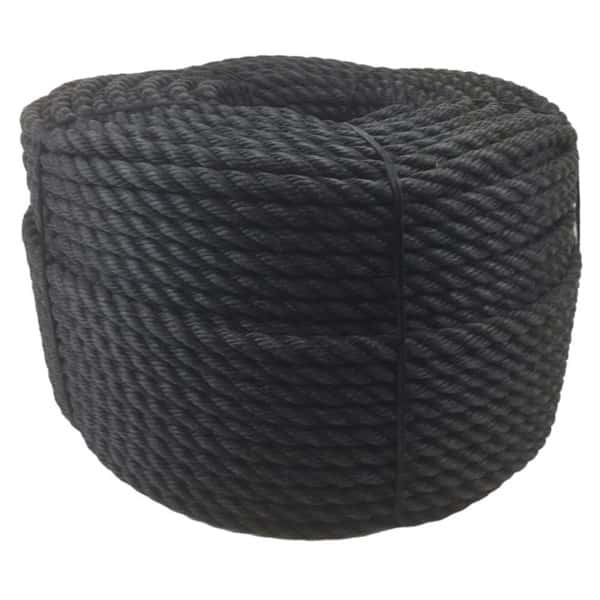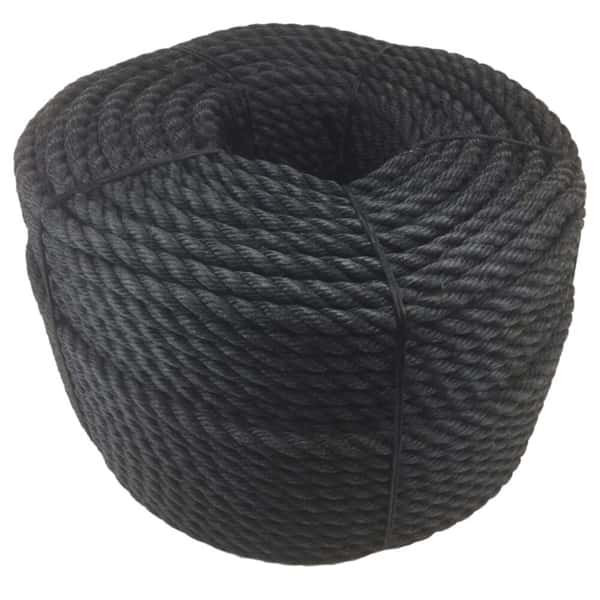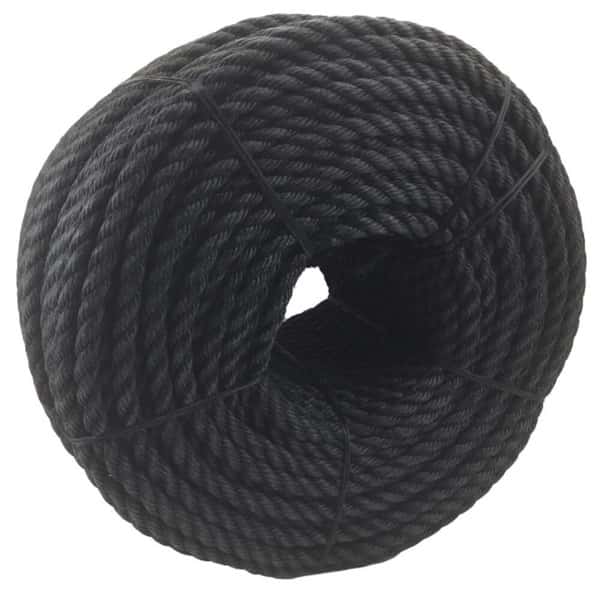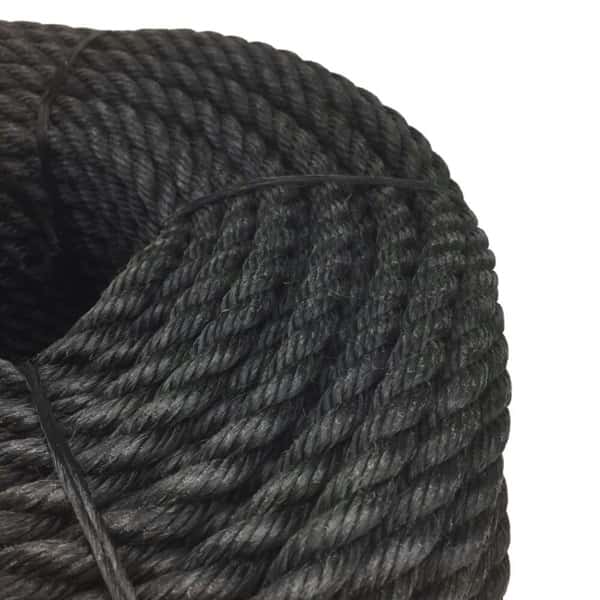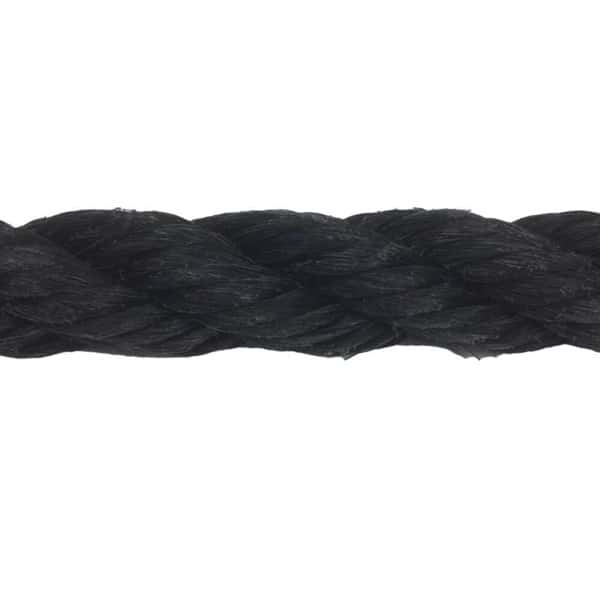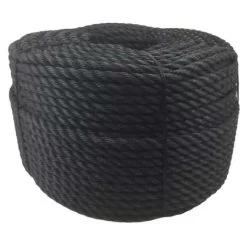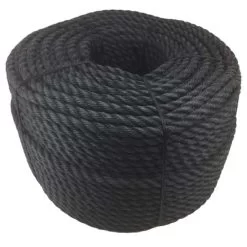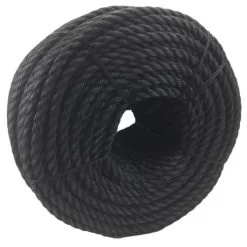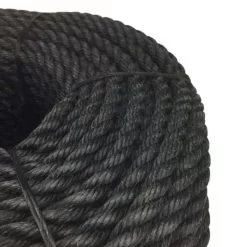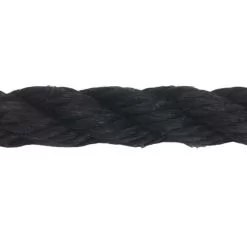32mm Black Staplespun Decking Rope 220 Metre Coil
32mm Rope Fittings Compatibility
This rope will fit our 32mm rope fittings, including cup ends, hooks, and eye plates, designed for secure and stylish installations.
Need fittings? Choose from a range of finishes to match your decking or garden project.
- Rope Type – Staplespun Rope
- Colour – Black
- Diameter – 32mm
- Order – By The Coil
- Both Ends Will Be Heat Sealed To Prevent Fraying
- Length – 220 Metres
£700.00
32mm Black Staplespun Decking Rope – 220 Metre Coil
Our 32mm Black Staplespun Decking Rope in a 220-metre coil is a high-strength, weather-resistant synthetic rope designed for decking, fencing, and outdoor landscaping. Made from twisted polypropylene fibres, this rope combines the classic appearance of natural fibre ropes with superior durability and low maintenance. The black finish adds a sleek, modern touch to decking and garden designs while providing excellent performance in all weather conditions.
Key Features
- 220-metre coil – Perfect for large projects, reducing the need for multiple joins.
- Weather and rot-resistant – Unlike natural ropes, it won’t degrade in wet conditions.
- Soft and easy to handle – Flexible and smooth for simple installation.
- Low maintenance – No need for annual treatment or oiling.
- UV-resistant – Maintains its colour and strength over time.
Why Choose Staplespun Rope?
- Moisture-resistant – Won’t shrink or expand when exposed to water.
- Durable and long-lasting – Designed for high-traffic outdoor areas.
- Modern black finish – A contemporary look suitable for various outdoor styles.
Ideal Uses
- Decking rope barriers
- Garden and landscaping projects
- Fencing and handrails
- Nautical and modern-themed designs
Bulk Order Convenience
A 220-metre coil ensures you have plenty of rope for larger projects, reducing waste and the need for multiple joins.
Order Your Coil Today
Get a strong, stylish, and weatherproof decking rope that’s built to last. Order your 220-metre coil today!
Synthetic Rope and Its Properties
Synthetic rope is made from man-made fibers such as nylon, polyester, polypropylene, and polyethylene. These ropes are known for their high strength, durability, and resistance to various environmental factors. Unlike natural ropes, synthetic ropes do not absorb water, making them ideal for use in wet and outdoor environments. However, synthetic ropes have their own set of characteristics and considerations that you should be aware of.
Behavior in Wet Conditions
One of the key advantages of synthetic ropes over natural ones is their minimal water absorption. Synthetic ropes generally do not shrink or expand when exposed to moisture, making them highly reliable in marine, industrial, and outdoor applications. However, while they do not absorb water, some synthetic ropes may become slippery when wet, which can affect handling and knot-holding capabilities.
Effects of UV Exposure
Unlike natural ropes, synthetic ropes are resistant to rot and mildew, but they can be affected by prolonged exposure to UV rays. Over time, UV exposure can weaken the fibers, causing the rope to degrade and lose strength. To mitigate this, synthetic ropes can be treated with UV inhibitors or stored out of direct sunlight when not in use.
Resistance to Chemicals and Abrasion
Synthetic ropes are generally more resistant to chemicals and abrasion compared to natural ropes. For instance, nylon and polyester ropes are highly resistant to various oils, acids, and alkalis, making them suitable for harsh industrial environments. Additionally, these ropes have excellent abrasion resistance, which means they can withstand rough surfaces without significant wear.
Elongation and Stretch
Different types of synthetic ropes have varying degrees of elongation. For example, nylon rope is known for its elasticity, which allows it to absorb shock loads without breaking. This makes nylon rope ideal for dynamic applications such as climbing, towing, and mooring. On the other hand, polyester rope has low stretch, making it suitable for applications where maintaining tension is critical.
Care and Maintenance
To extend the lifespan of synthetic ropes, it’s important to follow proper care and maintenance practices. Regularly inspect the rope for signs of wear, abrasion, or UV damage. If the rope shows significant signs of wear, such as fraying or thinning, it should be replaced to ensure safety and performance.
Storage Considerations
When storing synthetic ropes, keep them in a cool, dry place, away from direct sunlight and chemicals. Coiling the rope properly and avoiding tight bends can also help prevent kinks and maintain the rope’s integrity.
Summary
Synthetic ropes offer numerous advantages over natural ropes, including resistance to water, rot, and chemicals. They are durable and strong, making them suitable for a wide range of applications. However, it’s important to be aware of their susceptibility to UV damage and to take appropriate measures to protect the rope from prolonged exposure. By properly maintaining and storing synthetic ropes, you can ensure their longevity and reliable performance in various conditions.



